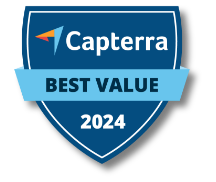Board meetings operate under well-defined protocols to ensure directors are efficient with their time and resources. This structured approach requires directors to prepare, making them well-equipped to contribute meaningfully. However, even with this order, board discussions can sometimes veer off course.
One of the most challenging meeting segments for board chairs is the AOB. Despite diligent efforts to manage and streamline this segment, there is always the potential for it to become lengthy and unproductive. How, then, should the board manage AOB?
This guide provides essential insights into AOB: what does AOB stand for in business, how it works, its types, benefits, best practices, and challenges.
What is AOB?
AOB meaning varies depending on the industry. In business, AOB acronym means Any Other Business, which refers to a segment in formal meetings where participants can introduce topics not included in the main agenda. In board meetings, AOB helps directors identify overlooked or spontaneous matters, providing flexibility and ensuring thorough board governance.
The board chair takes charge of AOB and must handle it like any other meeting segment. To maximize its use, a board chair must carefully prioritize its topics, excluding those the board recently tackled or irrelevant issues.

The common topics during AOB that board may include are:
- New Ideas or Proposals: AOB lets board members propose fresh initiatives such as new products, services, and partnerships. If the proposal gains the board’s support, it can be part of the agenda for the next meeting.
- Urgent Issues: The board can discuss unexpected incidents that require immediate action during AOB. These could be operational challenges, financial concerns, or external factors that can impact the organization. This lets the board take swift action without waiting for the next official meeting.
- Business Updates: The board of directors may also use AOB for significant announcements and business updates that have recently occurred. This puts everyone on the same page, ensuring the board is aware of critical information they can use in making decisions.
Following board meeting protocols, the board must prioritize the formal agenda and set AOB by the end. This allows the board to cover the most recent issues and take proactive measures to resolve them.
AOB in Corporate and Nonprofit Board Meetings
AOB topics can take on diverse forms in corporate and nonprofit board meetings, reflecting the distinct characteristics of each organizational type. Below are examples of how AOB topics are usually utilized in both settings:
Corporate Meetings
- Emerging Market Opportunities: Directors might introduce potential market expansions or new investment opportunities that have come to light since the agenda was set.
- Regulatory Changes: AOB could be used to discuss recent updates to laws or compliance requirements, ensuring the company stays aligned with legal obligations.
- Operational Hurdles: Immediate concerns such as cybersecurity attacks, workforce challenges, and supply chain delays can be brought up in AOB. Addressing these issues promptly helps directors come up with quick responses.
Nonprofit Meetings
- Fundraising Initiatives: During AOB, directors can propose new fundraising campaigns or events that need the board’s approval.
- Administrative Issues: Directors may highlight operational hurdles, such as staffing shortages or logistical problems, allowing the board to address them and improve overall efficiency.
- Program Adjustments: AOB provides an opportunity to discuss adjustments to ongoing programs or initiatives. These might include shifting focus based on new funding opportunities, community needs, or feedback from beneficiaries, ensuring that the nonprofit remains agile and effective in its mission delivery.
Why should meetings include AOB?

AOB is a great way to make meetings more comprehensive by encouraging honesty, transparency, and proactive collaboration within the board. Among other importances of AOB include:
Enhances Critical Thinking
Having an AOB segment boosts flexibility. It drives directors to convene on spontaneous matters with zero to minimal preparation, enhancing the board’s responsiveness and critical thinking. For example, a director raises an operational problem, which, if not immediately resolved, can disrupt the supply chain. During AOB, the board can deliberate on it and establish a reasonable resolution to mitigate possible damages.
Fosters Open Communication
AOB encourages directors to share ideas, concerns, and suggestions that may affect productivity, cultivating a more cooperative and inclusive working environment. Some typical concerns directors may raise are budgets, workforce management, or deadlines.
Ensures Comprehensive Coverage
Tackling AOB serves as a final checkpoint for the board before concluding a meeting. By dedicating time to discuss additional matters, the AOB ensures that the board covers all critical issues, leaving no topics unresolved.
Common Challenges Associated With AOB

AOB sessions—if not run properly—can hamper the flow of a meeting. To drive effective deliberations and increase the likelihood of success, the board of directors must understand these pitfalls:
Lack of preparation
Since the board usually identifies AOB topics before the meeting, directors may lack the necessary resources and knowledge to address the issues effectively. This makes it challenging for the board to form informed decisions, which may result in hasty and bad decisions.
Time management
AOB segments are scheduled right before the end of the meeting. If the board chair fails to prioritize topics and set boundaries, it can extend the meeting duration, causing fatigue to attendees.
Irrelevant topics
There will be times when directors will take advantage of AOB to put forward irrelevant or recurring topics so they can express their personal opinions. To avoid such instances, the board chair must maintain control over the agenda by steering the discussions to relevant issues and enforcing clear guidelines for appropriate AOB topics.
Excessive reliance
Structured agendas diminished their effectiveness in guiding discussions when participants excessively relied on AOB. This results in the agenda becoming irrelevant, causing attendees to delve more into less important matters.
Best Practices for Effective AOB Management
Board chairs must master AOB management to maintain focus during meetings and ensure productive outcomes. This section highlights best practices to help boards navigate AOB discussions efficiently.
Impose proactive communication
In case you miss including important topics in the agenda, you can have directors pitch their AOB topics right before the meeting starts. Gathering information is essential to give the board ample time to review and remove non-critical topics. By doing this, you can limit unnecessary topics from being included and make it much easier for the board chair to manage everyone’s expectations on the order of discussions during the actual segment.
Be strict with time
Be clear about the AOB time slot before the meeting to set boundaries. Doing so compels directors to respect the planned schedule and be direct with their proposed topics. To ensure the meeting stays on track, the board chair must enforce strict meeting protocols. Additionally, having an attentive board chair lead the meetings motivates board members to stay engaged and focused.
Finalize meeting agenda
In some cases, AOB discussions may not be an option. One way to avoid them is by finalizing the agenda. To make board meetings as comprehensive as possible, the board must include all key topics and have directors prepare in advance. Implementing an assertive approach prevents last-minute items from disrupting the flow, allowing more discussion time for the main agenda.
Practice prioritization of topics
It is inevitable for board members to propose multiple topics during meetings. For boards to focus on the most critical ones, they should practice prioritization, which often involves ranking issues based on urgency and impact. Prioritization ensures that disruptive matters come first, urging the board to use their time more efficiently.
Set clear action items
Even though AOB comes later in the meeting, the board must still document any decisions or actions from these discussions. Like formal agendas, the board should document decisions, task owners, and timelines to facilitate efficient follow-ups and progress tracking. Documenting enables the board to review and determine which items can be part of the next meeting’s agenda.
Use tools to streamline discussions
Meetings are technical business activities that benefit from the support of digital tools to enhance efficiency. To achieve modern and good governance, directors can explore board portal software. This tool provides a digital solution that enables the board to prepare for and conduct meetings with the highest levels of security and order.
When managing AOB, board members can use it to submit their topics in advance. Additionally, if the board needs to make quick decisions, they can arrange real-time voting on the platform. Documentation is not a problem with board portal software. It is capable of storing action items and minutes, streamlining follow-ups and progress checks.
FAQs About Any Other Business (AOB)
Need more information on AOB? Here are the top questions people want to know more about!
Can you have AOB during an AGM?
Companies have the discretion to decide whether or not to have AOB while also considering their goals, bylaws, and meeting protocols. With crucial gatherings, such as annual general meetings, keeping a structured and orderly process is paramount to regulate large attendance. Therefore, given the nature of AOB discussions, the board must carefully assess its inclusion in AGMs.
Boards must understand the challenges of AOB before making a final decision. If you think AOB is too much for your AGM, you can always ask your shareholders about their concerns before the meeting. This way, you can maintain the structure and formality of your meeting.
How should board members approach AOB discussions compared to the main agenda items?
Meeting protocols indicate that AOB should be at the last part of meetings, but board members must not shrug off concerns raised during these discussions. AOB can be a vital source of new agendas for the next board meetings – as long as they align with the overall objectives of the board and the organization.
What should not be part of AOB discussions?
Supposedly, AOB is for unexpected or emerging topics, not revisiting previously discussed matters. However, in practice, some boards of directors misuse AOB to reopen closed agendas, which leads to unnecessary debates and prolonged meetings. When this happens, it impacts the effectiveness of AOB and disrupts the entire meeting flow.
Can AOB topics be raised outside of meetings?
Yes. Boards can conduct informal discussions on AOB topics to gather information and explore ideas. It’s important to remember that decision-making is not allowed during informal discussions. Instead, directors can maximize this time to solidify their ideas and later present them to the team for collective decision-making.
Strengthen Order in Board Meetings with Convene

The AOB segment presents unique challenges but also offers opportunities for directors to address critical issues outside the main agenda if managed effectively. To succeed, leaders must understand its nuances and implement best practices, including the use of tools to streamline the meeting workflow.
Effective management of AOB is key to ensuring well-rounded discussions in board meetings. With tools like Convene, directors can streamline the entire process — from setting agendas to real-time voting and post-meeting documentation — leading to better governance outcomes.
Convene is a leading global board portal software, supporting diverse industries worldwide. Our digital platform provides smart, simple, and secure solutions, transforming meetings into paperless and seamless experiences. Whether you’re a board administrator or a director, Convene is designed to equip users with a suite of features that cater to all stages of the meeting process.
Discover how Convene can support you:
Pre-Meeting
- Store, review, and annotate board documents anytime, anywhere.
- Build meeting agendas in less time using the drag-and-drop feature.
- Automate the sending of meeting packs.
During Meeting
- Collaborate with co-attendees in real-time via video conferencing.
- Boost meeting participation with live tools such as page synchronization and laser pointers.
- Cast votes without complications.
- Record meeting notes and annotations digitally.
Post-Meeting
- Gain instant visibility of your action items for easier tracking.
- Sign documents electronically.
- Review post-meeting notes on the same platform.
Tired of disorganized and inefficient meetings? Reach out to us to schedule a free walkthrough and experience the Convene board portal firsthand.
Jean is a Content Marketing Specialist at Convene, with over four years of experience driving brand authority and influence growth through effective B2B content strategies. Eager to deliver impactful results, Jean is a data-driven marketer who combines creativity with analytics. In her downtime, Jean relaxes by watching documentaries and mystery thrillers.











